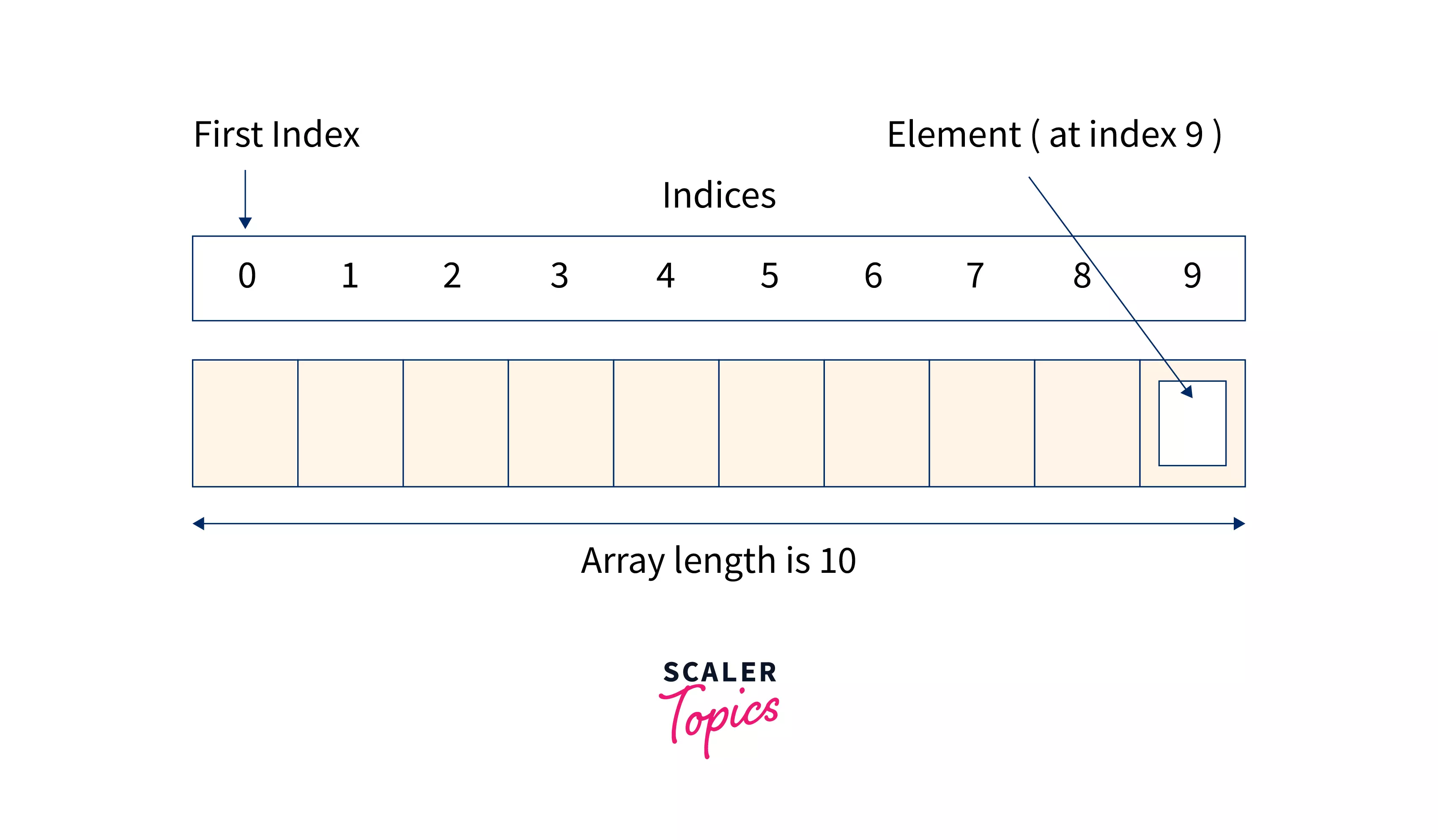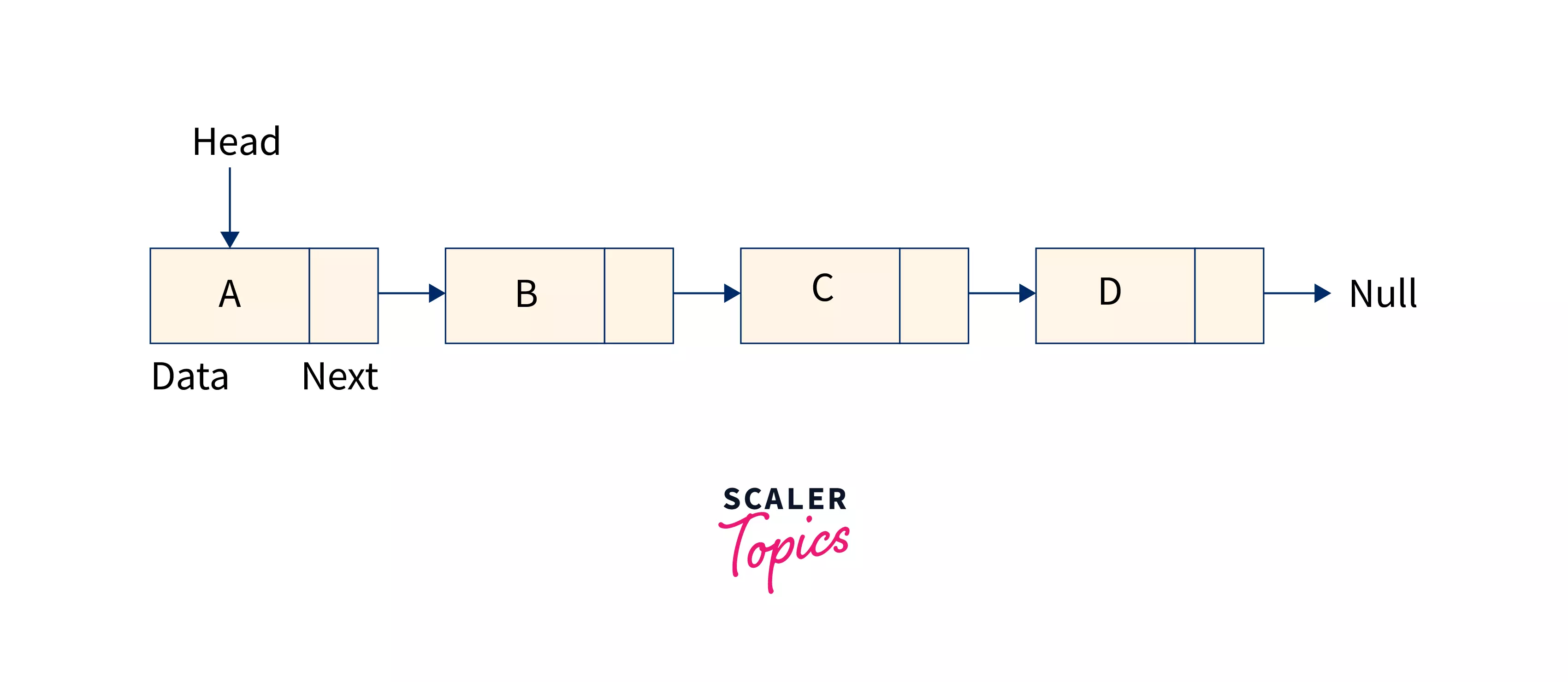Difference Between Array and Linked List

Overview
Arrays and Linked Lists are linear data structures that store data in memory. An array stores data elements in contiguous memory locations, thus allowing faster access using array indexes.
In contrast, a Linked list contains a sequence of data elements where each element is linked to its next element with the help of pointers. In this article, we will study the difference between Array and Linked List.
What is Array ?
- An array is a data structure that stores elements of the same data type in contiguous memory locations.
- Arrays are index-based data structures where each data element is associated with an index.
- An array is a big block of memory divided into smaller chunks, where each chunk stores some value.
For example, if we have to create an array to store 5 integer values, then each block will only keep the value of an integer type. If we try to store a value of anything other than an integer, we will get a compile-time error.
What is a Linked List ?
A linked list is a linear and non-primitive data structure in which each data element is allocated dynamically and points to the next element. Linked lists consist of nodes where each node contains a data field and a reference (link) to the next node in the list.
- A Linked List is made up of a sequence of elements called Nodes.
- Each node consists of two fields : one field stores data, and the second field (Pointer), stores an address that keeps a reference to the next node.
- Pointer (or Reference) to the next node, connects one node to an address of another node
Examples
Reading and Writing of an Array
As we discussed earlier, an array can contain only a single type of data, i.e., all integers, characters, or floating-point numbers. An array named arr having 10 integers can be declared as follows :

We can read and write an array using for loop. In the case of a one-dimensional array, we require only one loop for reading or writing while another for traversing the array to print the elements.
The below program demonstrates the reading and writing of the array :
Output :
Creating a Linked List
Every data element in a linked list points to the next element, where each data element is called a Node which has two fields, the data field, and the pointer. The Data field stores the value/information while the pointer stores the reference to the next Node. The first node of a linked list is known as Head Node.
Linked Lists are of multiple types that include a Singly-linked List, Doubly Linked List, Circular Linked List, and Circular double-linked List.

Creation, Traversing, Insertion, Deletion, Searching, Concatenation, and Flattening are some operations that can be performed on a linked list.
The below program demonstrates the reading and writing of the linked list:
Output :
Key Difference Between Array and Linked List
The main difference between an array and a linked list is in their data storage and manipulation methods. Arrays allocate a fixed-size, contiguous block of memory at compile time, providing efficient indexing for direct access to elements. Linked lists, on the other hand, allocate memory dynamically at runtime, allowing for flexible size adjustments. While arrays excel in fast element access and are ideal for scenarios where size remains constant, linked lists shine in dynamic data scenarios, enabling efficient insertion and deletion operations. However, linked lists consume more memory due to node overhead, and their elements are interdependent, making them less suitable for scenarios where direct element access is crucial.
Array vs Linked List
Let's summarize the differences between an array and a linked list in the table below :
| Array | Linked List |
|---|---|
| An array is a collection of elements of a similar data type. | A Linked list is a group of objects called nodes, which consists of two fields: data and address to the next node |
| An array stores elements in a contiguous memory location. | Linked lists store elements randomly at any address in the memory. |
| In an array, memory size is fixed while declaration and cannot be altered at run time. | Linked lists utilize dynamic memory, i.e. memory size can be altered at run time. |
| Elements in an array are not dependent on each other. | Elements in a linked list are dependent on each other, as each node stores the address of its next node. |
| Operation like insertion, deletion, etc., takes more time in an array. | Operations like insertion, deletion, etc., take less time than arrays. |
| Memory is allocated at compile time. | Memory is allocated at run time. |
| It is easier and faster to access the element in an array with the help of Indices. | Accessing an element in a linked list is time-consuming as we have to start traversing from the first element. |
| Memory utilization is ineffective in arrays. For example, if the array size is 5 and contains only 2 elements, the rest of the space will be wasted. | In linked lists, memory utilization is effective, as it can be allocated or deallocated at the run time according to our requirements. |
| Arrays support multi-dimensional structures. | Linked lists are typically used for one-dimensional structures. |
| Arrays are commonly used in low-level programming and for implementing data structures. | Linked lists are often used for specific data management needs like task scheduling and memory allocation. |
Conclusion
- A linked list is a linear data structure containing nodes chained together, but those nodes may not be allocated sequentially in the memory.
- An array is a data structure that stores data elements of the same data type in contiguous memory locations.
- A significant difference between array and linked list is that array has a fixed size required to be declared prior, but a linked list is not restricted to size, expansion, and contract during execution.
- Hence, the main difference between array and linked list lies in the storage schema, which helps the user decide which data structure will be more suitable for a given problem.
